The BSA-W. W. Greener
Lee-Speed Sporting Rifle
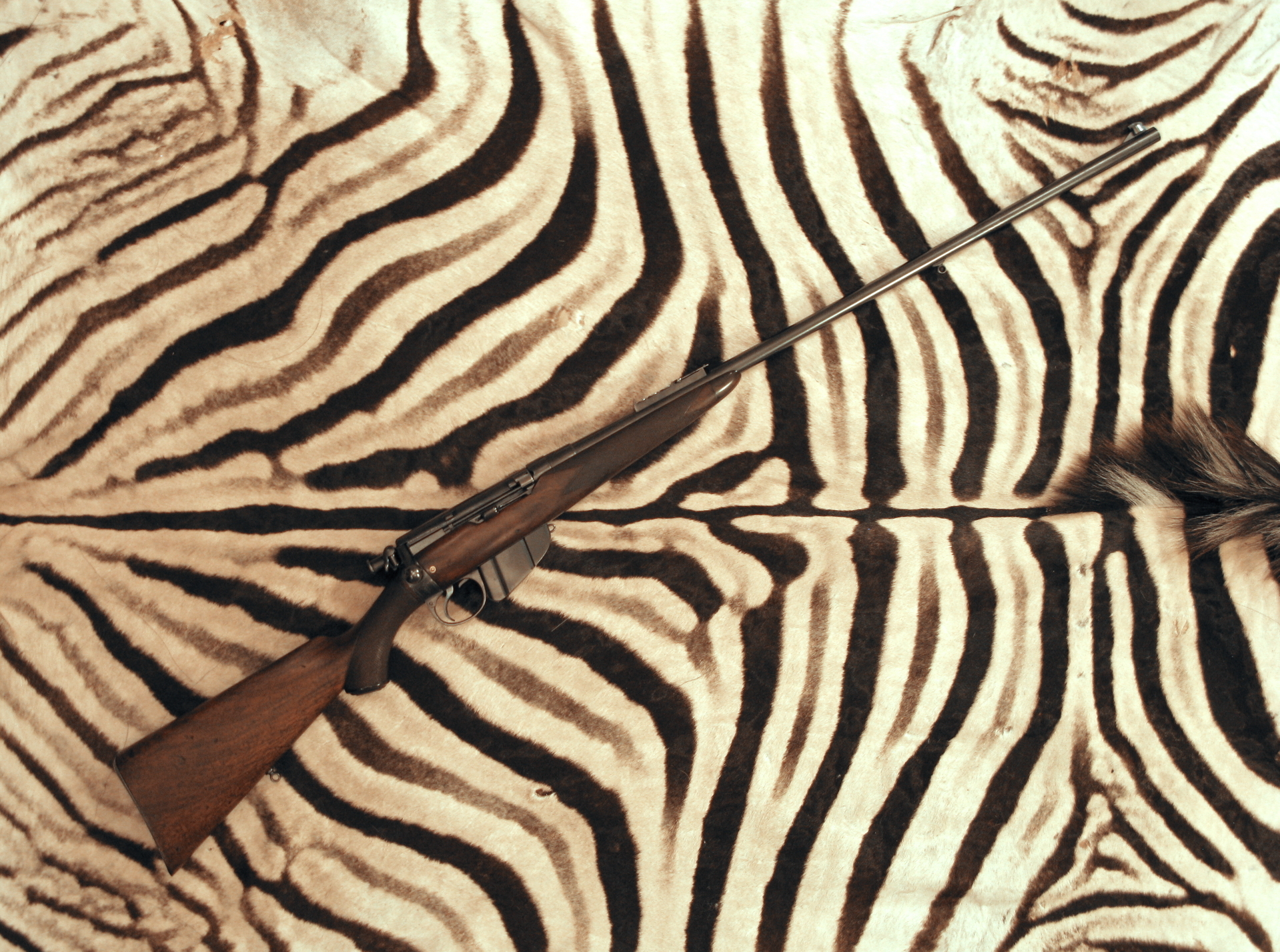
The BSA-W. W. Greener
|
The Lee-Speed RifleThe original incarnation of the most well known of all British service rifles was the Rifle, Magazine, Lee-Metford, adopted in 1888 just as several other major powers were adopting nitrocellulose small bore cartridges and new magazine rifles. It was named, in British convention of the era, for the bolt action of Canadian gun designer James Paris Lee and the rifling design of William Ellis Metford. Lee's bolt action design had its antecedents in his prior Model 1879 and Remington-Lee 1885 rifles for the United States Navy, but the design made for the British was a significant improvement over these and featured a 10-round box magazine fed by an en bloc charger, offering unheard of firepower. Metford's gently-rounded polygonal rifling pattern had been a mainstay of the military-match world for almost two decades (notably in the Gibbs-Farquharson-Metford and Deeley-Edge-Metford rifles) and was regarded by many experts as being superior in accuracy and minimizing blackpowder fouling when compared to Alexander Henry's angular rifling pattern. The Lee-Speed resulted from design improvements introduced by Joseph J. Speed, a manager and later Superintendent of the Enfield Royal Small Arms Factory (RSAF). Among these were the safety lever on the bolt and alterations to the magazine to incorporate a 10-round detachable box. Speed's design improvements became standard on the Lee-Metford and later Lee-Enfield rifles, but the rifles produced by the Birmingham Small Arms (BSA) factory for commercial sale were often named Lee-Speed in recognition of Joseph Speed's innovations rather than Lee-Metford, even though the Metford rifling was most typically used in sporting arms even after it was superceded by the Enfield rifling pattern in the military rifles in 1895 to improve barrel life with nitrocellulose propellant (it was concluded, apparently, that the rate and volume of fire for sporting arms did not pose this concern). My rifle was built by the firm of W. W. Greener on a BSA Lee-Speed barreled action. It has a long, yet light 29 inch barrel and express sights with one standing and three folding leaves, as well as a ladder sight (of decorative value only). The rifle is furnished with a 10-round box magazine, as opposed to the occasionally encounted shorter sporting magazine, and originally had the keeper chain but this has been lost. According to Graham Greener, As described, the rifle is engraved on the magazine box, action receiver, trigger guard, dust cover and buttplate. It also features a buffalo horn forearm tip. Unless the prices rose appreciably between 1895 and 1905, this would have been a best quality rifle from Greener or Jeffery (consistent with the engraving) or a standard grade from Holland (which firm was notably more expensive). Compared with a double rifle, it was a bargain. A best quality smallbore double ran 70 guineas and even a plain grade cost 25 guineas. Single shot rifles were almost as bad, with a best quality from Holland running 35 guineas and a plain grade still 20; the range from Jeffery or others would have been about half that price. | |||||||||||||||||||||||||||||||||||||||||||||||||||||||||||||||||||||||||||||||||||||||||||||||||||||||||||||||||||
The .303 Lee-Metford CartridgeAlthough intended from the outset to take advantage of the emerging nitrocellulose propellants, the original loading of the .303 for government service, dubbed the Cartridge, Small Arms, Ball, Magazine Rifle Mark 1.C Solid Case, .303 inch, used 71.5 grains (!) of Rifle Fine Grade No. 2 blackpowder compressed into the cartridge under a 215 grain cupronickel jacketed solid bullet for a rather modest muzzle velocity of 1850 fps at a searing 18 tons of pressure per square inch. The reason for this extreme solution was that the British had not been able to adopt a suitable form of nitrocellulose propellant. It may seem odd today, but although the basic chemical concept was well understood and used in industrial blasting operations, the ideal manufacturing recipe for a slow burning form of this material eluded engineers for some time. Early nitro propellants included the original French Poudre Blanche (i.e., White Powder) of Paul Vielle, Alfred Nobel's double base Ballistite, the competing single base Riflelite, Amberite, E.C., Schultze powder and lastly Cordite, a development of two British scientists and loosely based on Nobel's formulation, but superior. Three years later, in 1891, the first smokeless loading using 31 grains of Cordite was adopted for service, designated as Cartridge, Small Arms, Ball, Magazine Rifle Cordite Mark I. This loading increased the muzzle velocity of the bullet to 1970 fps. Although the muzzle velocity further increased to about 2050 fps with the post-Hague Convention full metal jacket Mk VI cartridge in 1904, it was with this earlier standard of performance that my particular rifle was first employed and that established the .303 Lee-Metford in the hunting field. Sporting loads ranged from 192 to 215 grain bullets, with softpoints, hollowpoints and split-nosed softpoints, as well as military ball. 
Original .303 Mk II Lee-Metford Ammunition | |||||||||||||||||||||||||||||||||||||||||||||||||||||||||||||||||||||||||||||||||||||||||||||||||||||||||||||||||||
Restoring the RifleThe object of the restoration was not a complete rolling back of the clock to the day that it left Greener, but rather a restoration of the metal, using period correct methods, and a thorough cleaning and re-finishing of the wood. My brother and I agreed that it would be a shame to remove the character imparted by untold years of exploits in the game fields. So, the stock bears the marks of honest wear in the form of dings, gouges and scratches. To me that has value as intrinsic as the original action and barrel. The difference is that now you can see the lustre of the rust blued steel that sets off the engraving and the wood glows with the same warmth that it knew in its early life. My brother labored for many, many hours to restore the metal and wood on this ancient sporting rifle and I think the result is awesome. 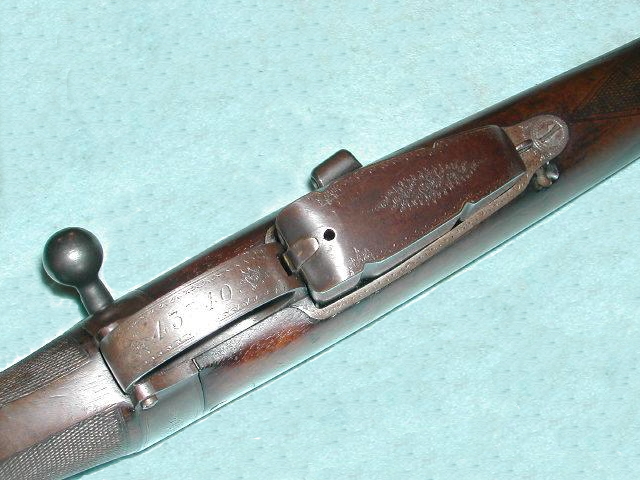
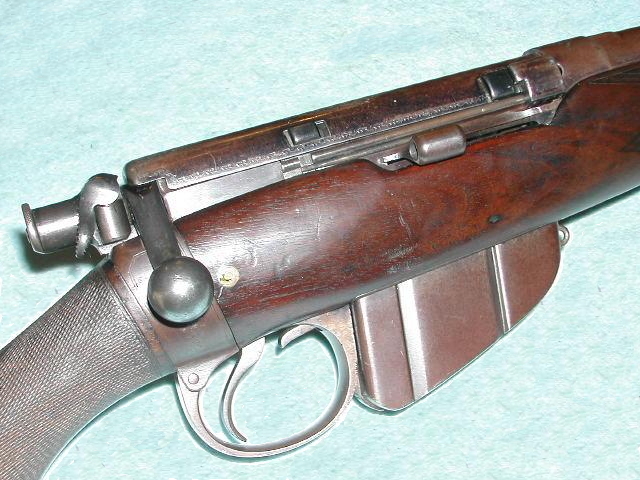
The Appearance of the Rifle Before Restoration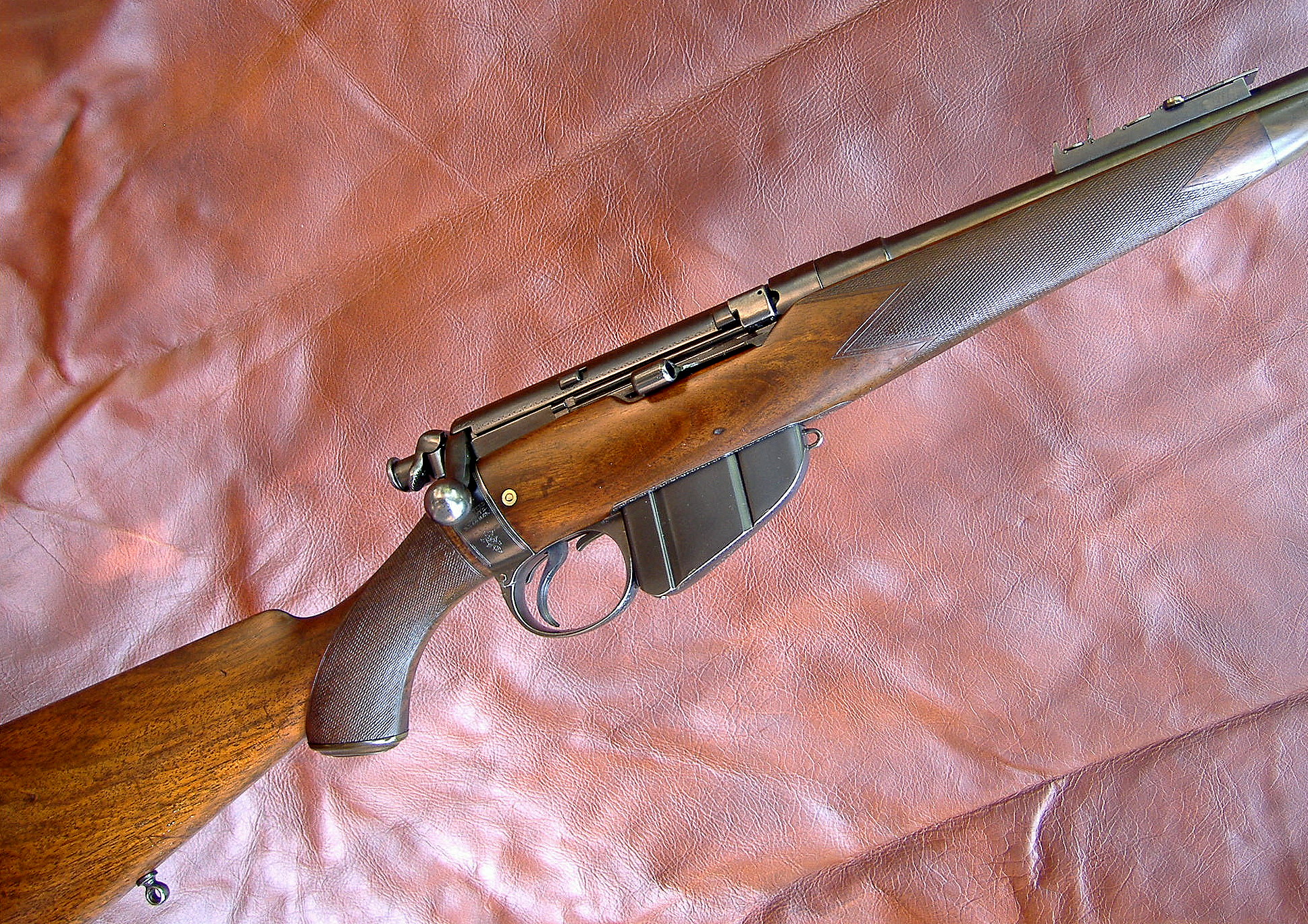
Right Side of the Rifle After Restoration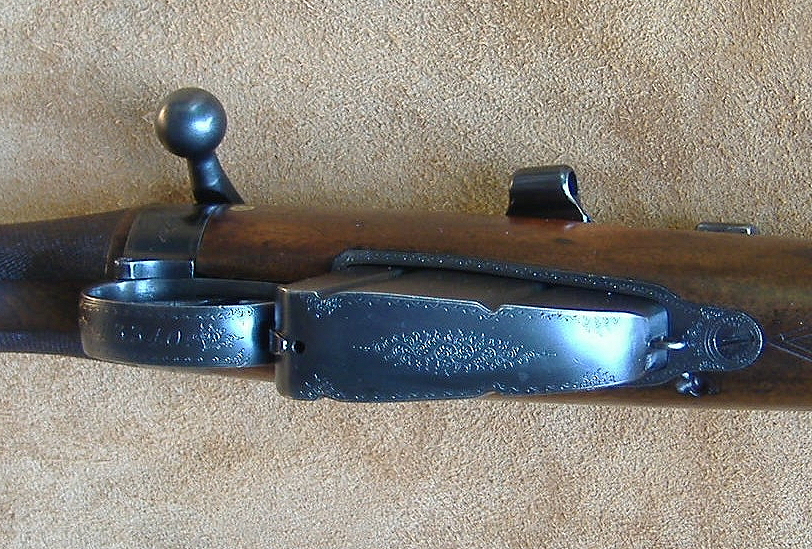
Close Up View of the Engraving on the Magazine Box and Trigger Guard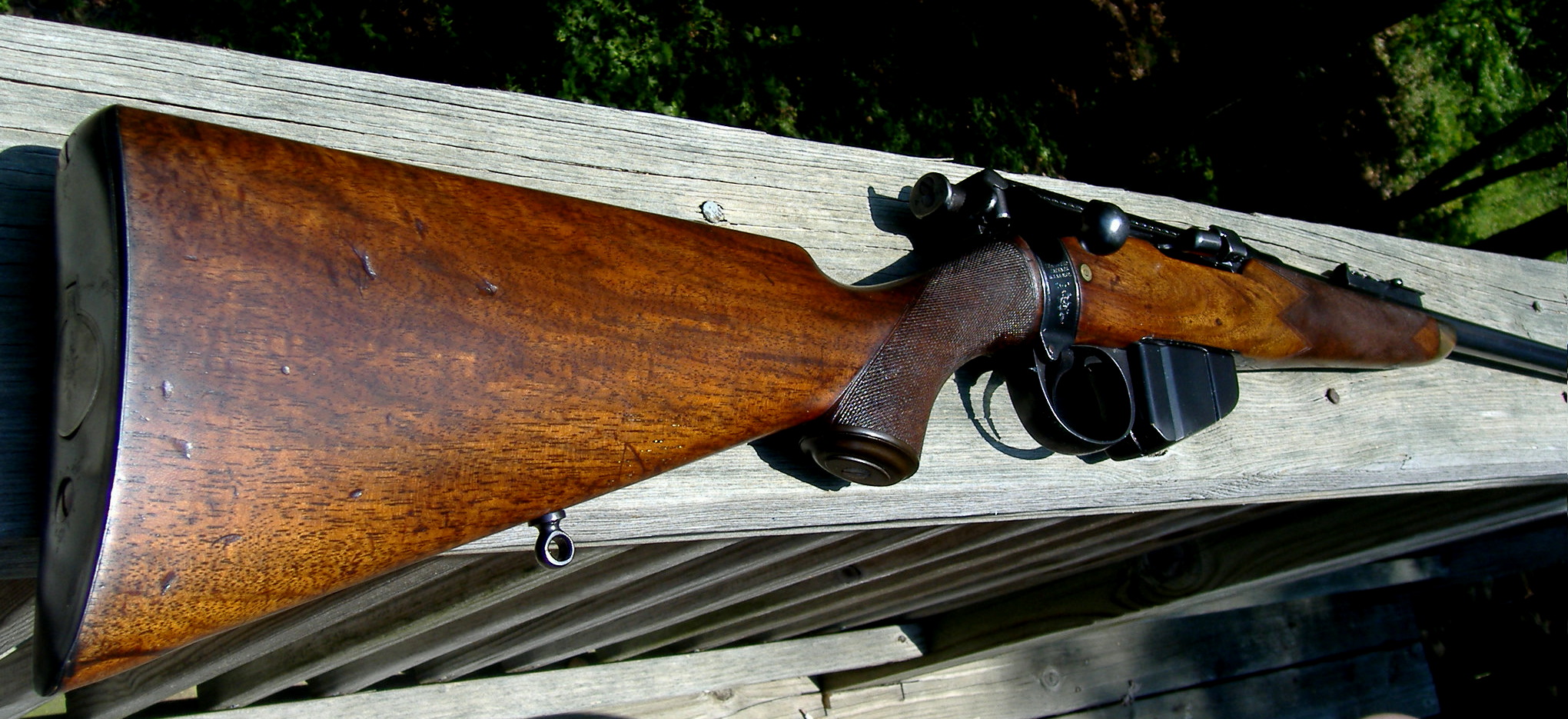
View of the Restored Finish of the Original Buttstock and Forearm | |||||||||||||||||||||||||||||||||||||||||||||||||||||||||||||||||||||||||||||||||||||||||||||||||||||||||||||||||||
Load DevelopmentFactory Loads and Commercial BulletsWhen I first bought this rifle, before any restoration work had been done I immediately went to a local sporting good store and purchased a box of the Remington .303 British 180 grain RN factory load. At the range later that day I found that I couldn't put a bullet on paper at 25 yards. I had to use a poster board and walk to within about 15 yards to see the keyholes widely spaced on the cardboard as they exited the muzzle with no imparted spin at all. It turns out that the Remington 180 grain RN factory load bullet only mikes to .310 caliber, a full two-thousandths under the nominal groove diameter. In many Lee-Enfield rifles this may work fine, but in the very shallow rounded grooves of the Metford-style rifling of my Lee-Speed rifle the undersized bullet finds no purchase and comes out of the muzzle tumbling. However, not only does the undersized Remington fail to enage the rifling, even the correctly sized .312 caliber Hornady 174 grain RN slips through as if the barrel were a smoothbore, creating keyholes when it strikes the target at all. When I slugged the bore on this rifle I measured it to be .3145 inches, well above the standard bullet diameter and a hopeless situation as far as using commercially produced jacketed bullets. Between .312 and .318 caliber is a No Man's Land. Cast BulletsWell, the obvious fallback is cast bullets. Many Lee-Metfords and Lee-Enfields suffer from oversized bores. Its a wonder to me that some of them ever shot acceptably. Perhaps they did not. Wartime expediency, I suppose. After all, a bullet that exits the muzzle with 90% of its normal velocity and flies downrange is still a hazard to enemy troops. But this rifle is not a converted military rifle; its a purposely built sporting rifle using a commercial sporting action and barrel. It shouldn't have an oversized bore. I speculated that the Metford rifling was finally worn out of it. Looking down a Metford rifled bore, it is hard to tell if it is worn because it is has no crisp sharp edges. Based on a number of recommendations found on Lee-Enfield interest forums I purchased a .315 caliber 240 grain bullet mould (.315-240GC) from Cast Bullet Engineering of Australia; Jim Allison's new style. The design has a long bore ride nose of a nominal .303 caliber and apparently does work well with many oversized bores using Enfield rifling. I cast these in air-cooled wheel weights and then loaded them unsized and lubed with Lee Liquid Alox. Unfortunately, with this alloy and hardness its three narrow driving bands failed to provide adequate purchase on the shallow rounded Metford rifling and they yawed so severely that, out of eight bullets fired at a poster sized target board at 100 yards, I obtained only two keyholes. Using some guidance from an online forum, I tried Accurate 5744 and Dacron filler to help the bullets bump up on ignition (the prior attempt had used Hodgdon Varget, a rather slow powder in this small case). Unfortunately, this technique produced the same result: one meager keyhole and five clean misses at 100 yards. Any of several things could be contributing to the poor accuracy: Using some more online guidance, I applied aluminum tape to the inside surface of the mold on opposite sides in order to slightly increase the bullet diameter (about 0.001 inch). Supposedly, the slight oblate shape is not a problem and more surprisingly, the mold isn't supposed to leak or form a web in the gap if its only about a thousandth. Incredibly, this turns out to be true. The as cast diameter now is .316 to .317 caliber. I dropped these bullets straight from the mold into a bucket packed full of ice and water, so the hardness should be around 22 BHN. The test results were encouraging - sort of. The impacts on the target board were keyholes, but they were arranged in a nice tight 2 inch group at 100 yards. That suggests that a shorter, lighter hard cast bullet might stabilize properly in this rifle. However, bullets cast from the 245 grain CBE mold are never going to work in this rifle. 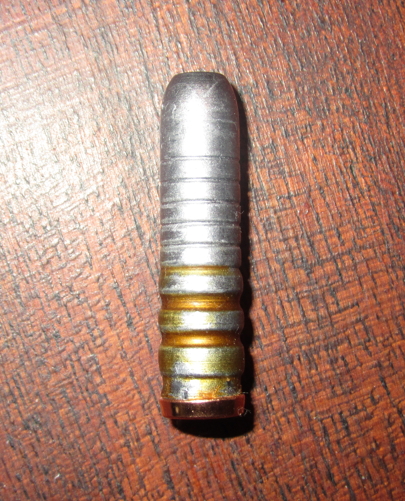
View of the Cast Bullet Engineering (CBE) .315-240GC DesignIncidentally, after trying the CBE bullets and the .312 caliber Hornadys, I cleaned my rifle and was surprised at the amount of fouling that I discovered. Initially, I assumed that all the visibly dark matter in the bore was leading, but the patches were coming out with heavy blue residue from copper fouling. Apparently, one of the consequences of an ill-fitting bullet is heavy copper fouling from gas blow by. Obviously, this does not contribute to good accuracy either and could have affected the performance of the cast bullets. Metal-Tape PatchingI bought some aluminum tape, which brought the diameter of a .308 bullet up to .314 with a single wrap. I also bought a sheet of copper foil with adhesive backing that was advertised as being of 1.25 mil thickness. Two wraps of this however produced 0.011 increase. A single thickness might easily strip off in the bore creating an obstruction and the adhesive backing caused me concerns as far as its likely tendency to adhere after muzzle exit even if partially rubbed off, which I knew from past experience with sticky paper patches was ruinous to accuracy. I might have tried the normal wrap of two thicknesses with an adhesive backing, but this seemed too thick. As an experiment, I tried running this through a Lee .314 cast bullet sizing die, with the result shown in the photos below. It is safe to say that this would have created a similar obstruction in the bore of the rifle. My advice: DO NOT try this! 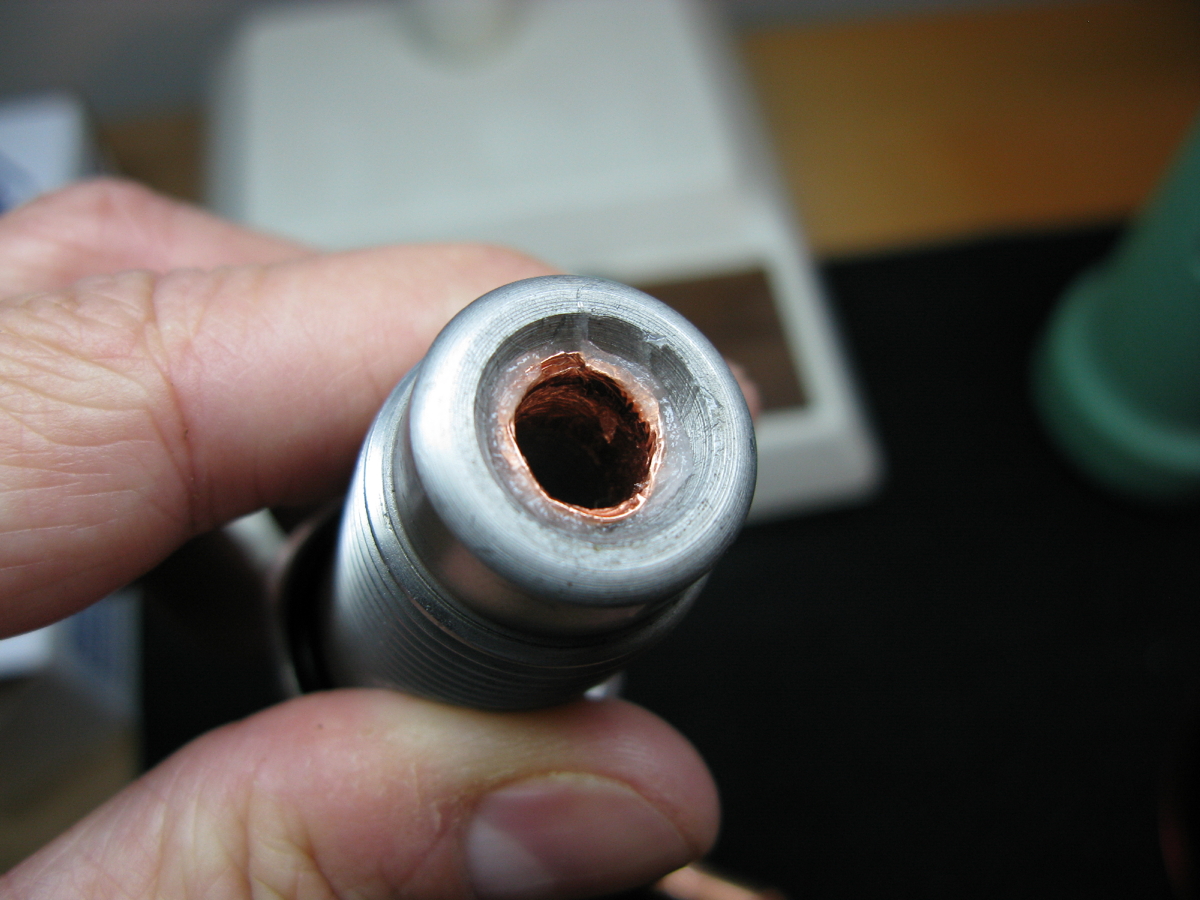
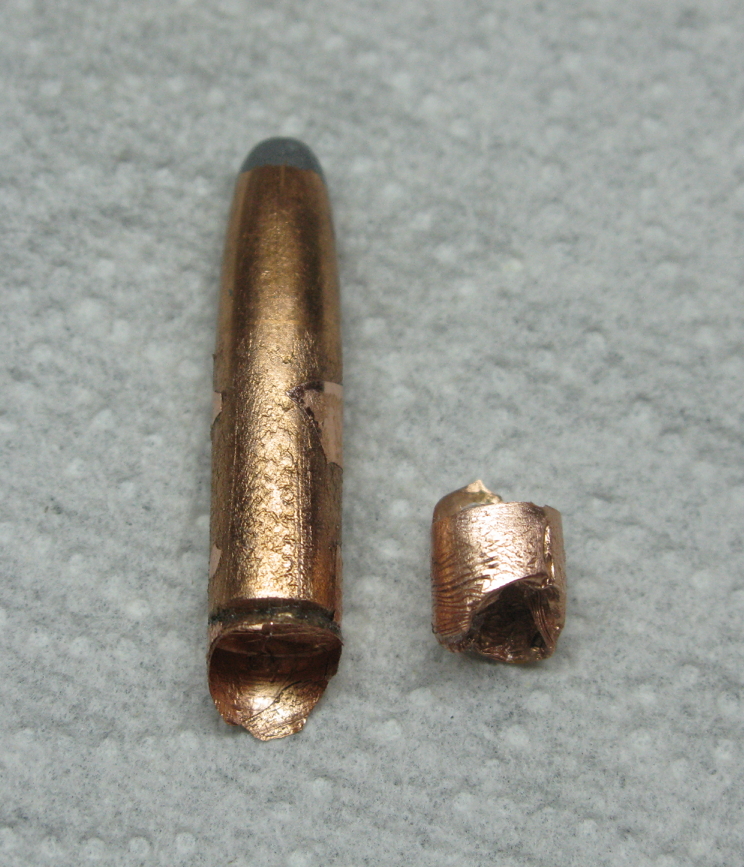
Copper foil galling a Lee sizing die and the remants from the foil wrap on a
| |||||||||||||||||||||||||||||||||||||||||||||||||||||||||||||||||||||||||||||||||||||||||||||||||||||||||||||||||||
DisclaimerWarning: For Information Purposes Only! Use this load data at your own risk. My Lee-Speed has an oversized groove diameter and very shallow Metford rifling. It is highly probable that the maximum loads shown here will significantly exceed safe maximums in most other Lee-Enfield rifles. No liability is assumed for the use of this data in any other firearm. It appeared to be safe in the test rifle, but was not subjected to pressure testing. Exercise safe reloading practices. Starting loads should always be reduced by 5 to 10% from the maximum load. Table of Load Development Testing
Return to: Classic Rifles, Pistols and CartridgesCopyright 2010 - 2017 -- All Rights Reserved | |||||||||||||||||||||||||||||||||||||||||||||||||||||||||||||||||||||||||||||||||||||||||||||||||||||||||||||||||||